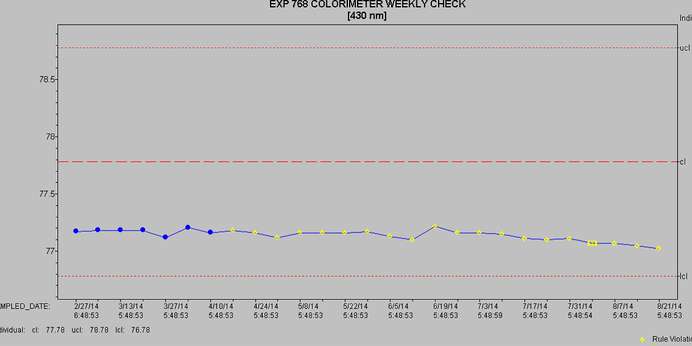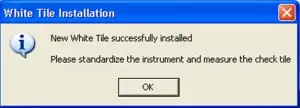
FAQ: “One of our manufacturing departments has a UltraScan VIS that they use to monitor a process at-line. After we saw that their white tile appeared a bit dingy and scuffed, we recommended they get a new one. The new white tile came in, but it comes with a software CD. My questions?
If the purpose of the white tile is to help set the top of the scale in both transmittance and reflectance measurements, why is the software necessary?”
The white tile is a calibrated instrument standard used to set up the diffuse d/8 sphere sensor for reflectance measurements, in both RSIN (reflectance specular included) and RSEX (reflectance specular excluded) modes. When we say it is an “instrument standard”, this means the instrument is forced to match the calibrated, traceable values assigned to this white tile during the standardization procedure.
These white tile calibration values are stored on an EPROM memory chip on the sensor. When you implement a white tile replacement, a CD is sent out with the New White Tile to update the sensor firmware with the new white tile values. White porcelain-on-steel tiles are fired in a kiln and the process of manufacture leads to some small variation among the tiles. You may not be able to see them, but these small differences are negated by assignment of calibrated values to each white tile relative to the same traceable assignment process. The white tile assigned to the sensor carries the same serial number as the sensor and cannot be interchanged with other white tiles.
If you are going to use the new calibrated white tile on this sensor, you have to run the CD program to update the white tile values in the sensor memory.


